Michael Ondaatje’s novels are all about putting the pieces together. Quite literally, because they proceed through a series of exquisited shaped vignettes that the reader has to fit into a pattern in her head; but more deeply, too, because their structure invariably reflects their theme. Nearly always they are about attempting to suture things together, to heal a fracture–between one side of Toronto and another in his first major novel, In the Skin of a Lion; between (and within) four wounded travelers in an abandoned convent in The English Patient; between a visiting forensic anthropologist and two divided brothers amidst the debris of Sri Lanka’s ongoing civil war in Anil’s Ghost. How to turn the fragments into a living whole, if only for a moment, is the burden of these elaborate, questing anthologies of scenes.
The main characters in these books are themselves in pieces, too, scarred fugitives found in spaces not their own, deeply alone and at a jagged angle to society. Ondaatje’s first book-length narrative, The Collected Works of Billy the Kid, was so much a set of disparate frames as it followed its splintered subject across the West that it is now listed among the author’s nine works of poetry and not his six books of fiction. His next big work, Coming Through Slaughter, in 1976, served up another riffing picaresque about a messed-up jazzman in New Orleans at the turn of the last century (the real cornet-player Buddy Bolden) who, after cutting up his wife’s lover in a jealous rage, ends up cut up himself, on the run, and slowly loses his mind as well as his art. One source of such concerns is revealed a little, perhaps, in Ondaatje’s much-acclaimed memoir, Running in the Family, in which, not really a local and not quite a foreigner, he returns to Sri Lanka, where he was born, to piece through the shards of his own family’s extravagant and wildly self-destructive history.
 These are poets’ novels, in other words, the work of a highly meticulous craftsman who creates scenes of uncanny beauty and precision and pieces them together like jewels in a necklace. Born to mixed ancestry in colonial Ceylon, educated in England and resident in Canada since 1962, while traveling widely, Ondaatje is harder to place than even such exile colleagues as Salman Rushdie or Kazuo Ishiguro, and there is a sense that he is always pushing across forms as well as continents, to create a new kind of mongrel fiction that leaves old categories behind. Few reading experiences, to my mind, are so enveloping and delectable as making one’s way through the slow, spacious pages of an Ondaatje novel, as pleasing to the senses as sipping white wine in the sunlight; and there is a different and deeper delight in going through a second time–”Only the rereading counts,” he cites here from Nabokov–to see the secret stitching that links a reference to Dumas in Northern California to one in southern France, or rhymes the image of one woman’s hair darkening in a shower to another. The question, though, that always haunts these elliptical and delicate works is how much their very beauty takes us away from the war and scenes of great pain they describe, and to what extent, in courting art, they leave real life behind.
These are poets’ novels, in other words, the work of a highly meticulous craftsman who creates scenes of uncanny beauty and precision and pieces them together like jewels in a necklace. Born to mixed ancestry in colonial Ceylon, educated in England and resident in Canada since 1962, while traveling widely, Ondaatje is harder to place than even such exile colleagues as Salman Rushdie or Kazuo Ishiguro, and there is a sense that he is always pushing across forms as well as continents, to create a new kind of mongrel fiction that leaves old categories behind. Few reading experiences, to my mind, are so enveloping and delectable as making one’s way through the slow, spacious pages of an Ondaatje novel, as pleasing to the senses as sipping white wine in the sunlight; and there is a different and deeper delight in going through a second time–”Only the rereading counts,” he cites here from Nabokov–to see the secret stitching that links a reference to Dumas in Northern California to one in southern France, or rhymes the image of one woman’s hair darkening in a shower to another. The question, though, that always haunts these elliptical and delicate works is how much their very beauty takes us away from the war and scenes of great pain they describe, and to what extent, in courting art, they leave real life behind.
Divisadero, Ondaatje’s latest epic of intimate moments, ravishing and intricate, begins on a ranch north of San Francisco in the 1970s, and within pages we are in the half-magical, aromatic world that Ondaatje has made his own. A teenage girl is guiding her horse through the madrone above the morning mist while the local bar down below goes up in flames. Another girl is playing “Begin the Beguine” on an old wind-up gramophone, reading The Leopard before making love and hanging Buddhist prayer-flags above her cabin as if to sanctify that love. A skilful cowherd is showing us how to hammer “sharpened sticks of redwood or cedar” from the inside out to heal a leak in a water tower, and how to splint up a broken wrist with willow.
Four people live on the ranch and all are deeply bruised, and correspondingly skittish: the patriarch has lost his wife while she was giving birth to his only daughter, Anna, now sixteen, and in his grief he has adopted another girl, Claire, born the same week, who likewise saw her mother die in giving birth to her. The cowhand, Coop, was taken in when, at the age of four, he hid out in a crawl space while his entire family was killed by a hired hand. The story comes to us through Anna at this point, but we are quickly made to see that there are pieces of every character in every other, and identity will always be a shifting and uncertain thing for them.
It is the particular distinction of an Ondaatje novel to mix richly atmospheric scenes of Keatsian tenderness with moments of explosive violence–this is, after all, a writer who devoted his first long book to an outlaw who blew away twenty men by the time he was twenty-one. And the interplay between the hurts that arise from those eruptions and the impulse to take care of those hurts, to tend to them with a surgeon’s professionalism, gives his books their drama and their theme. In this case, one of the girls gets too close to Coop, her father discovers them during a freakish ice storm, violence breaks out on every side– and all four characters, already fragile, are scattered to different corners of the world, more traumatized than ever.
The novel that follows picks them up two decades later, running from their pasts and trying to hide out in other worlds, and new pursuits, and it shuffles fluidly back and forth between Coop, gambling his way across the American West, and Anna, remaking her life in the Gers region of southwestern France, and settling down in a forgotten manoir to piece together the story of a French writer, Lucien Segura, who himself had disappeared from the house and who “had a wound in his voice” that speaks to her. The startling and unexpected risk in the novel comes when, in its third part, it travels back, at length, into the life of Segura himself, at the beginning of the last century, as if to say that the losses and divisions of the present can begin to be healed by looking at a completely different story in the past, and gradually coming to some resolution in our heads.
In every one of his books, Ondaatje alights upon some new territory and begins, with patient attentiveness, to excavate its forgotten history and secret treasures; it’s no coincidence that so many of his characters are archaeologists, researchers, archivists. And his settings are nearly always marginal places, far from the city, that few writers have chosen to light up before (part of Divisadero is set in the little Central Californian town of Santa Maria, forty-five minutes by car from where I write this, in my longtime home in Santa Barbara, and yet unvisited by almost everyone I know). In that context, it’s no coincidence that California’s Gold Rush is evoked in the second paragraph of the book, as Ondaatje tries to find the bounty in neglected people and scenes (as recently as the 1970s, he tells us, five thousand people were still panning full-time for gold in California’s rivers).



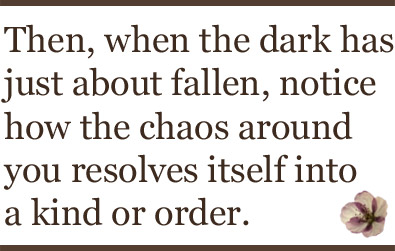
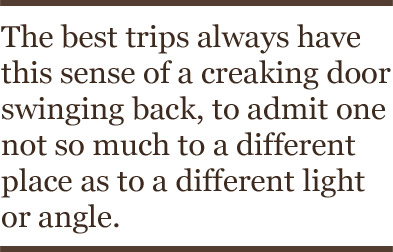
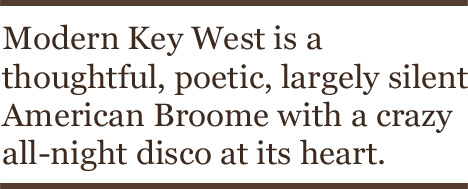
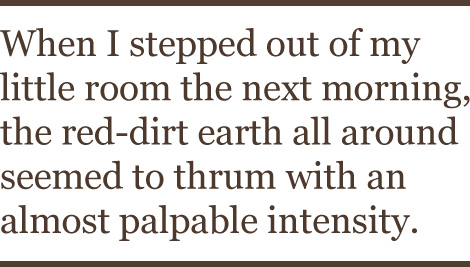

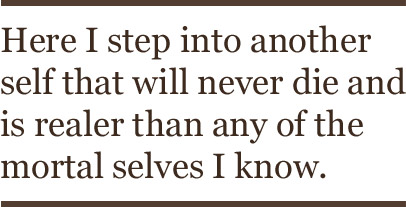
 The weather! As one who was born and grew up in England, I learned very early that it was the safest thing to talk about because it was so completely anodyne. In England, besides, the weather never changed; talking about the weather was like talking about the class system, or possibility, or the future—it was a way of saying we were all stuck with things and the best thing we could do was just practice the national sport of keeping our upper lips stiff. Later, when I grew up (on paper), I realized that the weather was the one thing you should never talk about precisely because it was so banal and never changed. To talk about it was to keep out of the conversation the much more important issues of progress and eternity and change.
The weather! As one who was born and grew up in England, I learned very early that it was the safest thing to talk about because it was so completely anodyne. In England, besides, the weather never changed; talking about the weather was like talking about the class system, or possibility, or the future—it was a way of saying we were all stuck with things and the best thing we could do was just practice the national sport of keeping our upper lips stiff. Later, when I grew up (on paper), I realized that the weather was the one thing you should never talk about precisely because it was so banal and never changed. To talk about it was to keep out of the conversation the much more important issues of progress and eternity and change.